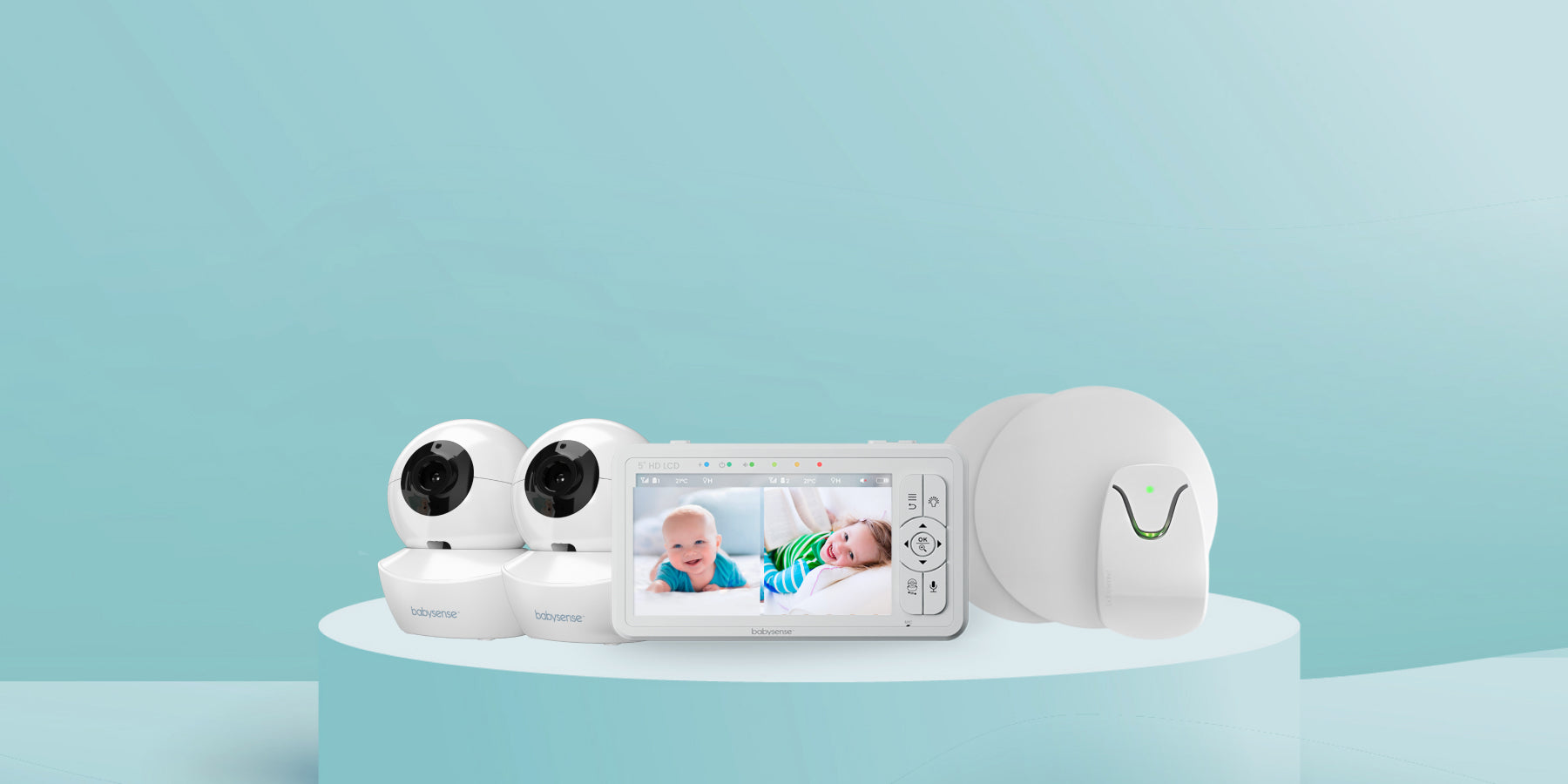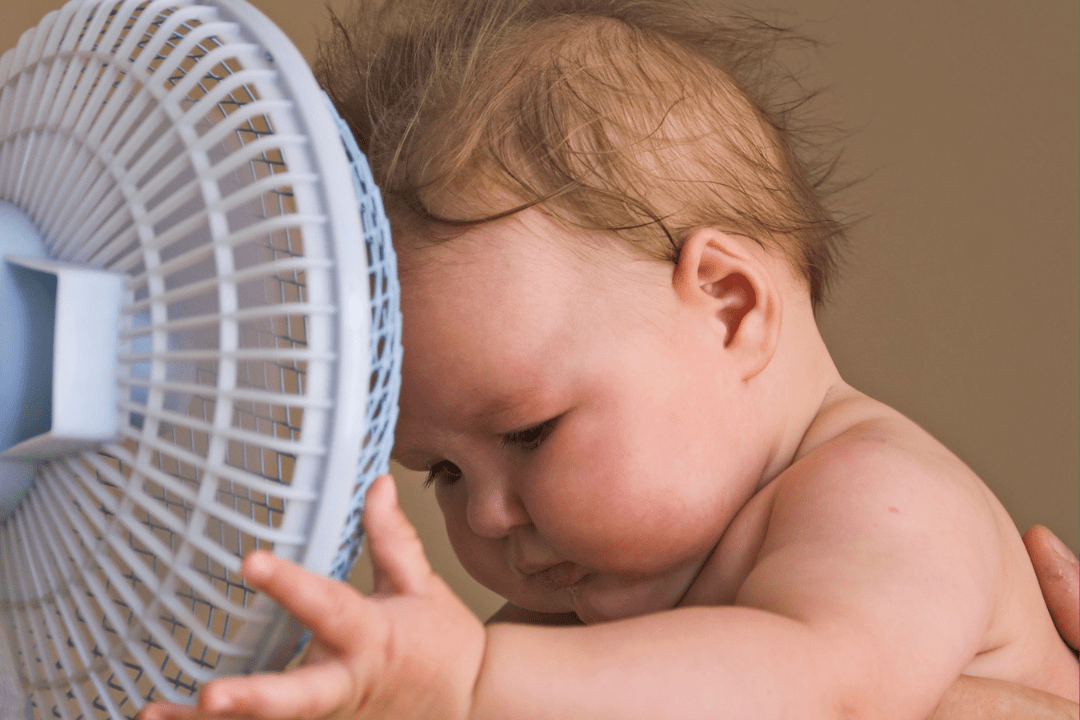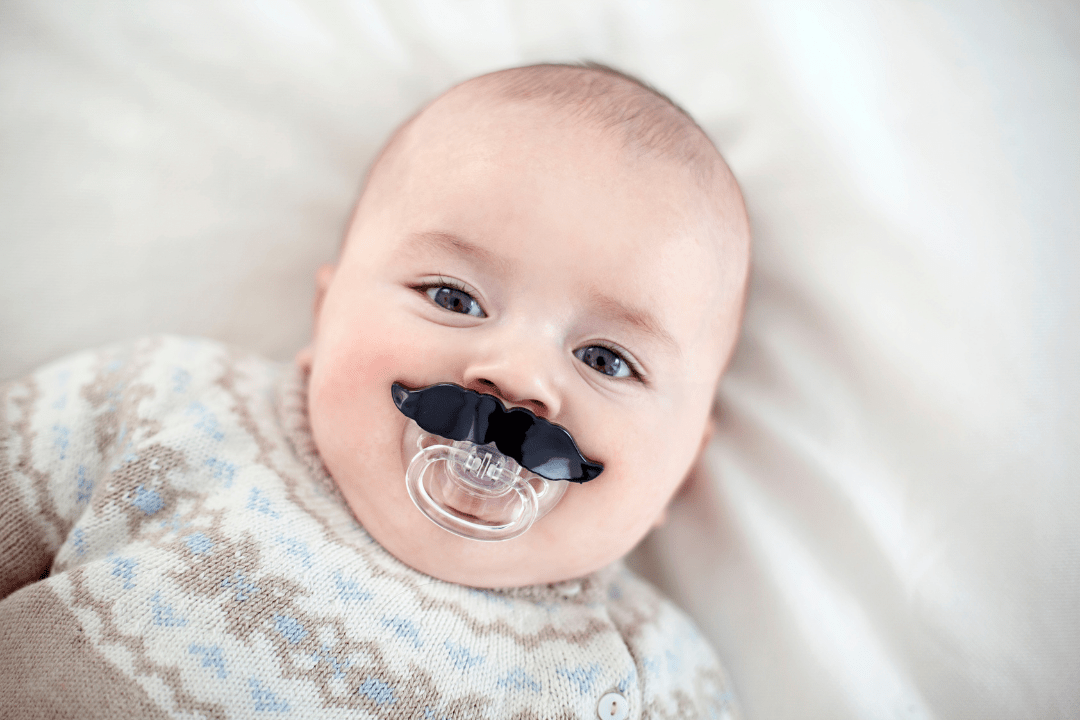Sleep issues are one of the most common (and challenging) issues new parents face. Many envision their sweet baby drifting off in their crib each night, maybe occasionally waking up once for a midnight feeding and then sleeping on through until the morning.
You've likely learned that the reality is much different. Many babies don't like sleeping in their cribs. They wake up at crazy hours, and the slightest change to their schedule can throw them off entirely. Many babies will only sleep if they're in someone's arms.
If your baby only sleeps while being held, it can be incredibly frustrating. While you love holding your baby, you need to get some rest as well. It's difficult to sleep with a baby on you all night.
If you've been struggling to get your baby to sleep without being held, read on for some tips, tricks, and strategies to help you get your baby in their crib and get yourself some needed sleep.
Why Your Baby Prefers Sleeping on You
Babies spend over nine months in the womb. It's warm and dark, there's ambient noise, and they're curled up nice and snug. Then suddenly, they're pulled from this safe space into something completely unfamiliar. There are loud noises, bright lights, and it's overwhelming.
At bedtime, we expect them to stretch out flat on their backs on nothing but a mattress. Of course, this is the safest way for babies to sleep, but it's not exactly comfortable for them. If they move the slightest bit, it's jarring.
On the other hand, a parent provides a nice soft body. The baby is snuggled up and warm, similar to how things were in the womb. They feel safe and secure. They know your smell and your voice. It's only natural that they'd want to sleep in your arms.
Is It Wrong for Babies to Sleep on Their Own?
It's perfectly normal for babies to sleep on their own. The decision to co-sleep is a personal one. Many parents want to have a family bed. Others find themselves with a family bed out of necessity.
If having your baby (and later your older child) sleep in the bed with you isn't working out, or if it's preventing you from getting a good night's sleep, then there's nothing wrong with transitioning your baby to their own bed.
You have to figure out what works best for everyone in the family.
When Is a Baby Ready to Sleep on Their Own
You can begin putting your baby in their own bed the day you bring them home from the hospital. Many parents opt to keep their baby in a crib, cot, or bassinet in their room for the first few months, while others start putting their babies in their own room with a baby monitor immediately.
As for when your baby will sleep through the night without needing you, that won't happen until your baby is at least three months old. Newborns need to eat every few hours, so they can't be expected to sleep for long stretches. By the time your baby is three months, they may be able to go for a six- to eight-hour period without eating, so they may be able to sleep longer at night.
That said, some babies aren't ready to sleep the whole night at three months. Many take eight months or longer before they can put themselves back to sleep. Every baby is different, so don't feel discouraged if your baby isn't meeting the three-month timeline.
Strategies to Try
Fortunately, there are many strategies you can try to get your baby to sleep without being held. What works for some babies won't work for others, so don't give up after trying only one or two strategies.
Also, remember that sleep training doesn't happen overnight. You'll likely need to give each strategy a week or two to see if it will work.
Use the 5 S Method
Dr. Harvey Karp introduced parents to the notion of the fourth trimester and the 5 S method. According to Dr. Karp, once babies are born, they go through a ‘fourth trimester.’
During these three months, your baby has to acclimate to life outside the womb. Learning to sleep is one of their biggest challenges.
Dr. Karp created the 5 S method to help babies transition from womb to the world a little more gentle. The 5 S's help recreate the feeling of being in the womb and help your baby fall asleep and stay asleep.
The 5 S's are:
- Swaddle
- Side or Stomach
- Shush
- Swing
- Suck
Swaddle
Newborns are born with a startle reflex. Even a little noise or movement can jar them awake, and their whole body jerks. They often wake up screaming and can't settle themselves. You wind up holding or rocking them to get them back to sleep.
Swaddling, whether with a swaddling blanket or a sleep sack, keeps them snug and secure. It also helps mitigate the startle reflex. If something startles your baby, their arms and legs are held close and won't be able to flail. Your baby will be able to stay asleep.
When swaddling your baby, be sure to use a swaddling blanket. They're made of thin, stretchy fabric that allows your baby to move and keeps them cool. Don't swaddle your baby too tightly, just enough to keep them snug.
Side or Stomach
The American Academy of Pediatrics recommends that the safest way for babies to sleep is in an empty crib or bassinet with no blankets or pillows. It’s critical to ensure that they always are placed flat on their backs. Sleeping on their stomachs can lead to SIDS (Sudden Infant Death Syndrome).
However, if you're trying to calm a fussy baby at bedtime, hold them on their side or stomach for a few moments. You can even rest them against your shoulder. These positions can help calm and soothe. You can then ease your baby into the crib on their back once they've settled.
Shush
Babies can hear in the womb, but the sounds are muffled. Sounds out in the real world are much louder and jarring. On the other hand, it's rarely completely quiet in the room. Your baby needs the right balance of noise to sleep comfortably.
A shushing sound is often the perfect balance. It makes your baby feel secure and can block out some of the louder noises. If you don't want to make a shushing noise for a long time, a white noise machine is usually a good substitute.
Swing
While in the womb, babies move around almost like they're curled up in a hammock. They spend much of their day moving. That's why you likely felt your baby kick at night. Once you got still, they were able to wake up.
When you put your baby into a crib, there is no movement. They have to learn to sleep without that movement. Small swinging motions can also help to calm a fussy baby who's having trouble sleeping.
Suck
Sucking is a natural movement for a baby. By sucking, babies are often soothed. However, deciding whether or not to use a pacifier is a difficult decision. On the one hand, sucking on a pacifier is soothing, and for some babies, it's the only way to calm them.
There are two main challenges with pacifiers. First, it's one more thing you'll have to wean your baby off of as they get older. Some babies give them up without a fuss, but some get attached, and it can be challenging to get them to give it up.
Another issue with using a pacifier with a sleeping baby is that the pacifier may fall out. If your baby is dependent on it for sleep, then they'll likely wail until you come and put it back in their mouth. You'll have to do this until your baby is old enough to find it and put it back in their mouth on their own.
Put Your Baby Down While They are Drowsy
One of the biggest mistakes of parents is to put their baby in the crib once they're fully asleep. After all, it seems like a good idea – if your baby is in a deep sleep, you think they'll be less likely to wake up when you set them down.
The problem is, if your baby wakes, it can be jarring. Imagine if you fell asleep in your bed and woke up in a completely different place, you'd be disoriented too.
Also, when your baby falls asleep while you're holding them, they're not learning to put themself to sleep. If they wake during the night, they won't know how to go back to sleep independently.
If your baby starts to fuss, pick them up and soothe them, but be sure to put them back down before they fall asleep.
If you put your baby down while they're drowsy, they aren't as affected as when you put them down fully awake. They also learn to fall asleep in their bed instead of in your arms.
White Noise Machine or Music
White noise makes a sound like a strong wind or a waterfall. For many babies (and older kids and adults), white noise can be calming and help them to fall asleep. You’ll find this available with our video baby monitors.
Use Your Scent
Your baby knows you by scent, especially if you're a mother. Your scent is a sign that you're close by and your baby feels safe and secure. You can give your baby a sense of security if you can transfer your scent to their crib.
Put their crib sheet in your bed for a night. Sleep on it for the night so that your scent transfers. The next night, you can use the sheet in your baby's crib. Just remember not to wash it.
Use a Heating Pad
When your baby falls asleep on you, they get used to being cozy and warm. Then, when you transfer them to their crib, it can be disruptive. The bed is cold, and the temperature change can wake them.
One way to help is to warm up the crib with a heating pad. Put a heating pad on the bed for a few minutes before laying your baby down. Remove it and make sure the bed isn't too warm. The transfer will be much easier since your baby will be moving to a place that's just as warm.
It's important to note that you should never put a heating pad in the bed while your baby's in it. The heating pad could cause harmful burns. Always remove it before putting your baby down.
Cry It Out
There are a few different versions of the cry it out method, also known as extinction. With this method, you put your baby in bed and go out of the room. If they cry, you let them cry until they eventually fall asleep. Over the next several days, the crying will start to diminish, and your baby will fall asleep on their own.
Another version of the cry it out method is gradual extinction. With this method, you go back in the room each time your baby cries but don't pick them up. You gradually taper off going in until your baby is falling asleep on their own.
The Chair Strategy
With this strategy, you start with a chair next to the crib. You don't pick up your baby if they fuss, but you let them know you're there. Each night you'll move the chair a little farther away from the crib. Eventually, you'll be completely out the door.
Fade It Out
If you don't want to go cold turkey and put your baby straight in the crib, you can try fading things out.
If your baby usually falls asleep in your arms and then you continue to hold them for 30 minutes, cut that time down by a few minutes each night. When you finally do make the transition, it should be easier on your baby.
Switch Up Bedtime
Keep track of what time you start with your bedtime routine. Figure out what time you start holding or rocking your baby. Then take note of what time they fall asleep and how long you hold them afterward. You may need to do this for a few nights to get accurate times.
Once you've figured out these numbers, skip straight to the moment when your baby falls asleep. Put them in the bed. With any luck, their body is already used to falling asleep at that time, and they'll drift off on their own.
Get a Special Crib
If you're willing to spend some money to get your baby to sleep without being held, you may consider buying a special crib. Several companies make cribs that are designed to rock and move your baby in a way that simulates their time in the womb.
While some parents swear by these beds, others have no success. They can be pretty pricey, so you'll have to decide if it's worth the risk.
Things to Avoid
While there are many things you can do to help your baby sleep without being held, there are also some things you should avoid.
A Completely Quiet House
Many parents go to great lengths to keep their house quiet to not wake a sleeping baby. However, you don't want your house to be completely silent.
Your baby should learn to sleep through a bit of noise. They'll be more likely to stay asleep when you inevitably make a loud noise.
Starting at the Wrong Time
Babies aren't capable of sleep training before four months at the earliest. If you try to start too soon, you're just going to be frustrated when it doesn't work.
Inconsistencies
When you're trying to sleep train, you have to be consistent. Each night should look as much alike as possible. Try to keep the same nap schedule and bedtime. Go through a routine in the same order, such as singing a song, reading a story, giving kisses, etc.
The idea is that you're trying to teach your baby sleep cues. By doing all of these little things at the same time and in the same order, you are signaling to your baby that it's time to fall asleep.
Final Thoughts
It can feel like things will never get better when you're deep in the trenches of baby sleep training.
However, if you stick with it and learn more about your baby's temperament, everyone will get better at bedtime. Your baby will drift off on their own, and everyone can get a good night's sleep.





